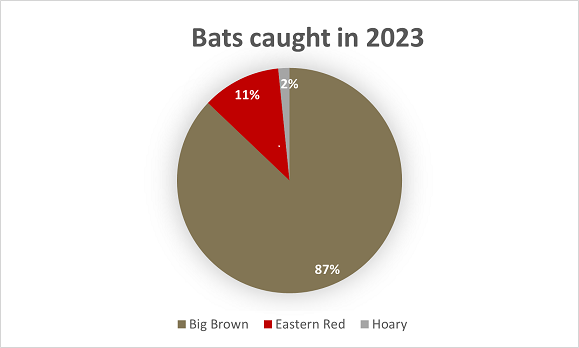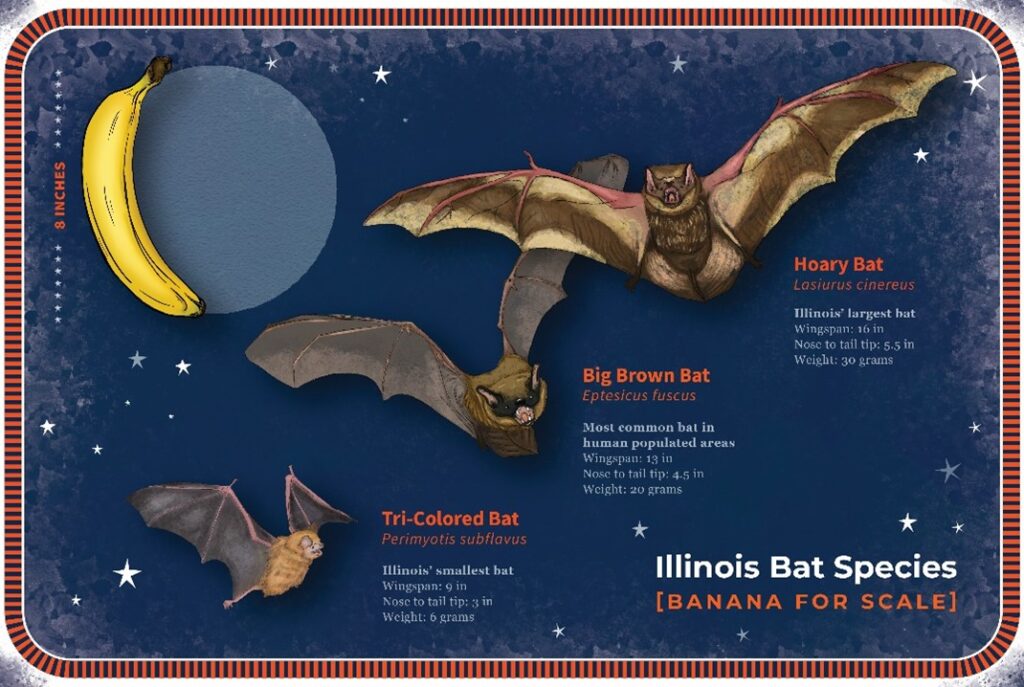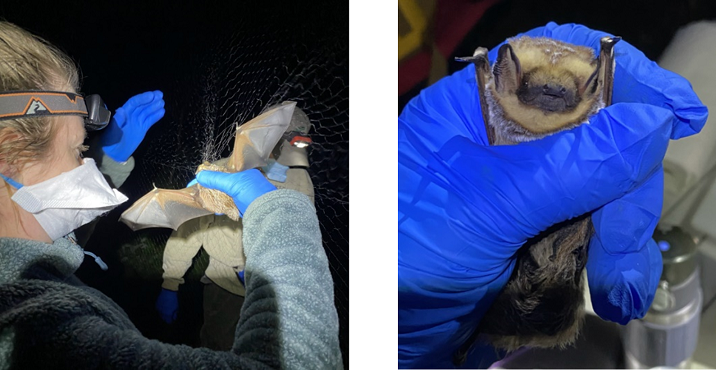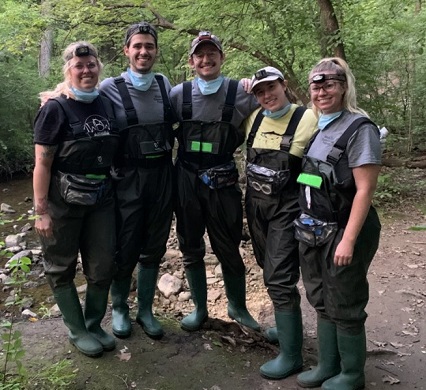We’ve had another exciting field season at IBCP! This year we focused our mist netting efforts in central and northern Illinois. We set out a total of 94 nets this year across four different sites and caught 62 bats!

Our most exciting catch of the year was a Hoary bat! This bat was exciting to catch because this species tends to fly at higher altitudes than other bat species making them more difficult to catch. The Hoary bat is the largest bat species in Illinois weighing up to 35 grams and having a wingspan of up to 410 mm (See infographic below for reference).

Hoary bats are common in Illinois and while it is difficult to catch them, they have a distinct low frequency echolocation call that we can decipher from other bat species from our recordings using ultrasonic acoustic recorders (https://batwatch.ca/echolocation). Hoary bats are not affected by white-nose syndrome because they migrate south for the winter instead of hibernating in caves where the disease can spread. However, when Hoary bats migrate in the fall and spring, they are heavily impacted by wind energy development from fatally colliding with turbines or lung damage from the change in air pressure. You can read more about wind turbines affecting bats and the studies to reduce these collisions at https://www.batcon.org/our-work/research-and-scalable-solutions/wind-energy/. The Hoary bat we caught was a healthy female adult weighing 28 grams.

We had an amazing field crew this year and I want to thank our technicians Bella Stevens and Wiley Welsh, our volunteers, and IDNR staff for their assistance and support this year.


